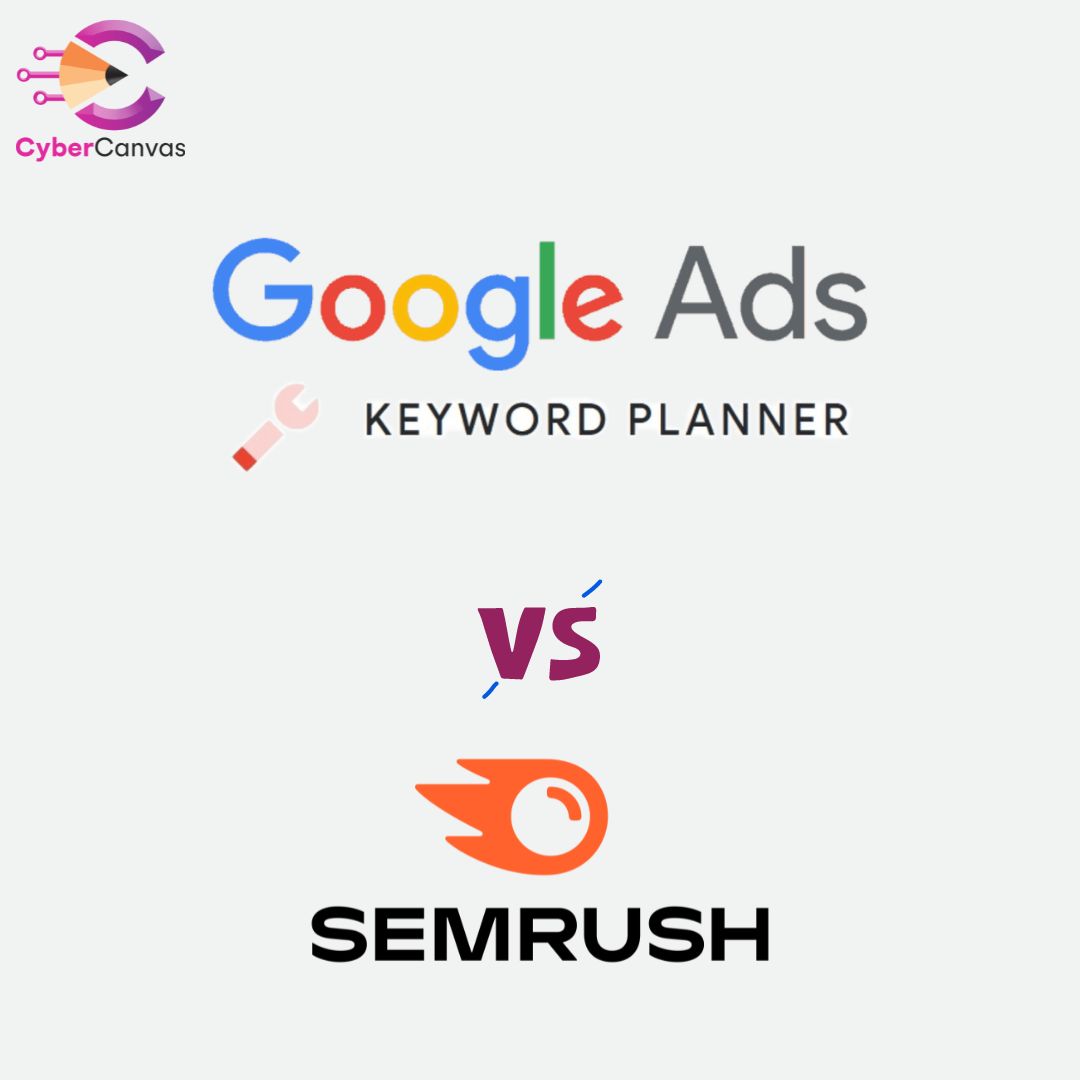Unlocking Targeted Traffic: Google Keyword Planner vs. SEMrush Keyword Magic Tool for Stellar Google Ads
Introduction:
In the ever-evolving realm of digital marketing, attracting high-quality traffic that converts is paramount for successful Google Ads campaigns. This guide delves into the powerhouses of keyword research: Google Keyword Planner and SEMrush Keyword Magic Tool. We’ll explore their unique features, how to leverage them effectively and unveil strategies to generate genuine traffic and customers for your Google Ads.
Understanding Keyword Research Tools:
-
Google Keyword Planner (Free): A built-in tool within Google Ads, Keyword Planner provides basic metrics like average monthly searches, competition level (low, medium, high), and top of page bid (low range). It’s ideal for beginners and budget-conscious marketers.
- Harnessing Google’s Insights: Explore Google Keyword Planner, a free tool that offers a glimpse into search trends directly from Google Search.
- Uncover Keyword Volume: Estimate average monthly searches for your target keywords, aiding in campaign planning and budget allocation.
- Competition Insights: Gauge competition levels (low, medium, and high) to understand the advertising landscape for your chosen keywords.
- Unearth Related Keywords: Discover valuable long-tail keywords that can attract more qualified leads.
-
SEMrush Keyword Magic Tool (Paid): Offering a broader scope of data, SEMrush goes beyond average monthly searches. It delves into keyword difficulty score, search intent (informational, navigational, transactional), keyword variations, and historical search volume trends. This empowers you to make informed decisions for targeted campaigns.
- Supercharge Your Research: Delve deeper with the SEMrush Keyword Magic Tool (paid subscription required).
- Keyword Difficulty Score: Unmask the true difficulty of ranking for keywords, inform bidding strategies, and optimize ad copy.
- Organic Search Traffic Data: Gain insights into organic traffic for keywords, helping you identify potentially lucrative opportunities.
- Global Keyword Research: Expand your reach with global keyword data, catering to international audiences if needed.
-
Transforming Insights into Action: Building Targeted Google Ads Campaigns
- Keyword Selection Strategy: Employ a balanced approach, prioritizing high-volume keywords with manageable competition levels.
- Craft Compelling Ad Copy: Integrate high-performing keywords naturally into your ad copy, emphasizing value propositions for genuine customers.
- Target the Right Audience: Utilize Google Ads’ audience targeting options to reach users actively searching for your products or services.
- Landing Page Optimization: Ensure your landing pages seamlessly align with your ad copy and offer a positive user experience, fostering conversions.
Choosing the Right Tool:
-
Campaign Budget and Scope: For smaller campaigns or those just starting out, Google Keyword Planner can be a good initial choice. However, for more complex campaigns requiring in-depth insights and competitive analysis, SEMrush shines.
-
Keyword Research Preferences: If you value a streamlined experience and basic data, Google Keyword Planner might suffice. But for advanced research, understanding competitor strategies, and uncovering long-tail keywords with lower competition, SEMrush offers a clear advantage.
-
Attracting Real Customers – Beyond Keyword Research
While keyword research is foundational, genuine customer acquisition requires a multi-pronged approach:
- Content Marketing: Craft valuable content that addresses your target audience’s pain points and establishes your brand as an authority, organically attracting qualified leads.
- Social Media Marketing: Leverage social media platforms to connect with your audience, build brand awareness, and drive traffic to your landing pages.
- Email Marketing: Foster relationships with potential customers through targeted email campaigns, nurturing leads, and driving conversions.
Measuring Success and Optimization – Continuously Improve
- Track Key Metrics: Closely monitor key metrics like click-through rate (CTR), conversion rate, and cost-per-acquisition (CPA) to gauge campaign effectiveness.
- A/B Testing: Implement A/B testing for various ad components (headlines, call to action, landing pages) to identify the most effective combinations for attracting real customers.
- Refine Targeting: Analyze campaign data to refine audience targeting and ensure you’re reaching the right people at the right time.
Optimizing Your Google Ads Campaigns:
1. Keyword Targeting:
- Leverage both tools to identify a mix of high-volume, relevant keywords with moderate competition.
- Prioritize long-tail keywords to target specific user intents and potentially lower cost-per-click (CPC).
- Use negative keywords to exclude irrelevant searches and avoid wasted ad spending.
2. Compelling Ad Copy and Landing Pages:
- Craft clear, concise ad copy that directly addresses user search queries and highlights unique selling propositions (USPs).
- Ensure a seamless user experience by creating landing pages that align perfectly with your ad copy and offer a clear call to action (CTA).
3. Ad Group Structure:
- Organize your Google Ads campaigns into well-defined ad groups. Each ad group should focus on a specific theme or product category, with tightly related keywords. This enhances relevance and quality score, potentially lowering your CPC.
4. Conversion Tracking and Optimization:
- Implement conversion tracking in Google Ads to measure the success of your campaigns. This data helps you identify which keywords and ad copy are driving conversions (sales, leads, etc.).
- Continuously monitor campaign performance, analyze results, and refine your targeting, ad copy, and landing pages based on insights.
5. Budget Management:
- Start with a reasonable budget and gradually increase it as you gain confidence in your campaign performance.
- Utilize Google Ads’ automated bidding strategies (like “Maximize Conversions” or “Target CPA”) to optimize your budget for your desired goals.
Attracting real customers:
- Go Beyond Keywords: Consider user demographics, interests, and online behaviors when targeting your ads.
- Focus on Value Proposition: Communicate how your product or service solves user problems or fulfills their needs.
- Emphasize Brand Trust: Build credibility through positive customer reviews, testimonials, and industry recognition.
- Retargeting: Utilize remarketing strategies to reconnect with website visitors who have shown interest but haven’t converted yet.
Conclusion:
By strategically using Google Keyword Planner vs. SEMrush Keyword Magic Tool, combined with these best practices, you can craft Google Ads campaigns that attract genuine traffic and convert visitors into valuable customers. Remember, success hinges on ongoing optimization, data-driven decisions, and a commitment to providing exceptional value to your target audience.
Tip:
Consider exploring Google Search Console to gain insights into organic search traffic and identify opportunities to enhance your website’s content for better visibility in search engine results pages (SERPs). This can complement your Google Ads efforts and attract organic traffic from potential customers who may be further along in the buying journey.
For more information on Google Ads and Keywords Planner, we have complete plans for ads Contact Us Now.








No comment